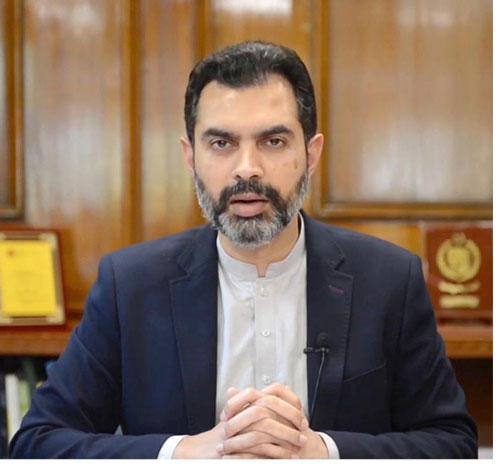Staff Reporter Karachi
The State Bank of Pakistan’s Monetary Policy Committee (MPC) on Tuesday decided to maintain the policy rate at seven percent.
Talking about the MPC’s decision at a press conference in Karachi, State Bank of Pakistan Governor Dr Reza Baqir noted that the SBP had kept the policy rate at 7pc for more than a year, adding that the reason for doing so was to support the economy during the Covid-19 pandemic.
He said the results of the consistent monetary policy, as well as measures taken by the SBP, were in front of the nation in the form of 3.94pc economic growth.
“Inflation, which was nearly at 9.7pc in April, has reduced and the number for June is 8.9pc. Even now inflation is high.
There is a need to reduce this further. There has also been a bit of reduction in headline inflation and core inflation.”
The MPC noted that the pandemic was not over and the country was going through the fourth wave of the coronavirus in view of which it wanted to “give a feeling of stability to the nation” and show that the SBP’s “supportive monetary policy” would be maintained, Baqir added.
“The MPC said that if there was a need to change the monetary policy, the change would come in a gradual way.
If a change is made, it would not be in a way similar to how we had to bring the change in 2019 because back then the conditions of our economy were very different [and] we had a very large external deficit.”
The SBP has maintained the status quo since June last year after it reduced the policy rate from 13.25pc in about three months following the outbreak of Covid-19.
Moving on to the current account deficit (CAD) which increased in May and June, the SBP governor said seasonal factors were behind the rise.
“We see a lot of [import-related] payments in June since the budget was expiring. Besides this, there were some new imports — for example, vaccines imported to [fight] Covid — the impact of which was not present last year.
Food import payments have been high in the last fiscal year. The government imported flour and wheat to reduce the prices of [the products] in our country,” he explained.
For a country like Pakistan, which was considered to be an emerging market, a “moderate amount of current account deficit is appropriate”, especially if the country wanted to keep the economic growth rate between three and four per cent, Baqir said, adding the SBP believed a current account deficit that was 2-3pc of the GDP was “sustainable”.
He said that remittances had increased by a record 25pc and the SBP believed they would remain “resilient”.
Remittances in the current fiscal year would increase compared to last year although the rate of increase would not be as fast, he added. Talking about the Roshan Digital Account initiative, he said overseas Pakistanis had sent $1.8 billion so far which he termed a “source of support”.
“Our current account deficit is fully funded which means we are seeing enough sources … the current account deficit is overfinanced because of this. Our prediction is that our reserves will increase in this fiscal year.”
There had been three warning signs in the past whenever the country’s current account deficit had skyrocketed — when the CAD was increasing very fast, when the exchange rate
remained unchanged and SBP’s reserves were falling, he said.
“I want to tell you all that all three warning signs are not present during the current increase which is why the SBP has confidence that the moderate increase in our current account deficit will be sustainable.”
The SBP was seeing a “healthy increase” in exports, the SBP governor said. Noting that exports had increased by 13.7pc in the last year, he said many exporters were increasing their capacity for this year. “We expect the export increase will remain good this year,” he added.
He said that the central bank would announce an initiative related to loans for small and medium enterprises (SMEs) soon.
Previously, SMEs had to show collateral to banks but after the government’s new policy, they would not have to do so, Baqir disclosed.










